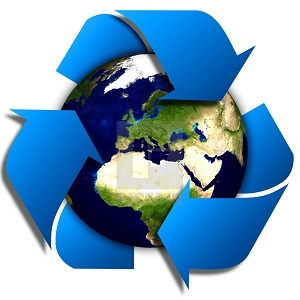Unlocking the Power of Best Recycling Software for Sustainable Resource ManagementPosted by James Carter on September 6th, 2023  In the digital age, where information flows like a river, the quest for the best recycling software has become paramount. Efficient waste management and resource recycling are essential components of a sustainable future, and the right software can make all the difference. In this article, we delve into the world of recycling software solutions, exploring their functionalities, benefits, and the impact they can have on businesses and the environment. Join us on this journey towards eco-friendly and cost-effective waste management. 1. Understanding the Role of Recycling SoftwareRecycling software is the unsung hero of modern waste management. It streamlines the entire recycling process, from collection and sorting to transportation and processing. The primary goal is to maximize resource recovery while minimizing waste. Here's how recycling software achieves this: 2. Efficient Collection ManagementOne of the core features of best recycling software is its ability to optimize collection routes. With advanced algorithms, it can determine the most efficient paths for collection vehicles, reducing fuel consumption and emissions. This not only saves money but also reduces the carbon footprint. 3. Streamlined Sorting and ProcessingRecycling facilities rely on precise sorting to ensure that materials like paper, plastic, and glass are separated correctly. Best Recycling software utilizes machine learning and artificial intelligence to enhance sorting accuracy, improving the quality of recycled materials. 4. Real-time MonitoringIn the world of recycling, time is of the essence. Recycling software provides real-time monitoring of collection and processing activities. It allows for immediate responses to any issues or disruptions in the recycling process, ensuring seamless operations. 5. Data Analytics for Informed Decision-MakingRecycling software collects vast amounts of data, from collection schedules to material composition. This data can be harnessed to make informed decisions, such as optimizing routes further, adjusting collection frequencies, and identifying trends in recycling behavior. 6. The Environmental Impact of Recycling SoftwareThe benefits of best recycling software extend beyond operational efficiency. They play a pivotal role in reducing the environmental impact of waste management: 7. Reduced Carbon FootprintBy optimizing collection routes and minimizing fuel consumption, recycling software significantly reduces greenhouse gas emissions. This is a critical step towards combating climate change. 8. Resource ConservationEfficient sorting and processing result in higher-quality recycled materials, reducing the need for virgin resources. This conservation of resources is essential for preserving our planet's finite natural reserves. 9. Landfill DiversionRecycling software aims to divert as much waste as possible from landfills. By doing so, it helps extend the lifespan of landfill sites and reduces the environmental harm caused by them. 10. Cost Savings and Revenue GenerationApart from its environmental benefits, recycling software also offers substantial financial advantages: 11. Lower Operational CostsEfficiency gains in collection and processing lead to lower operational costs. This is especially crucial for municipalities and waste management companies looking to reduce expenses. 12. Revenue from RecyclablesHigher-quality recycled materials can fetch better prices in the market. Recycling software increases the value of recyclables, translating into additional revenue. 13. Compliance and ReportingIn the ever-evolving landscape of waste management regulations, compliance is non-negotiable. Recycling software simplifies compliance by generating accurate reports and ensuring that operations adhere to local regulations. The best recycling software is not just a tool; it's a catalyst for change. It empowers businesses and municipalities to embrace sustainability, reduce costs, and contribute to a cleaner environment. As we navigate the challenges of waste management in the 21st century, recycling software emerges as a beacon of hope, lighting the way towards a greener and more prosperous future. Like it? Share it!More by this author |


